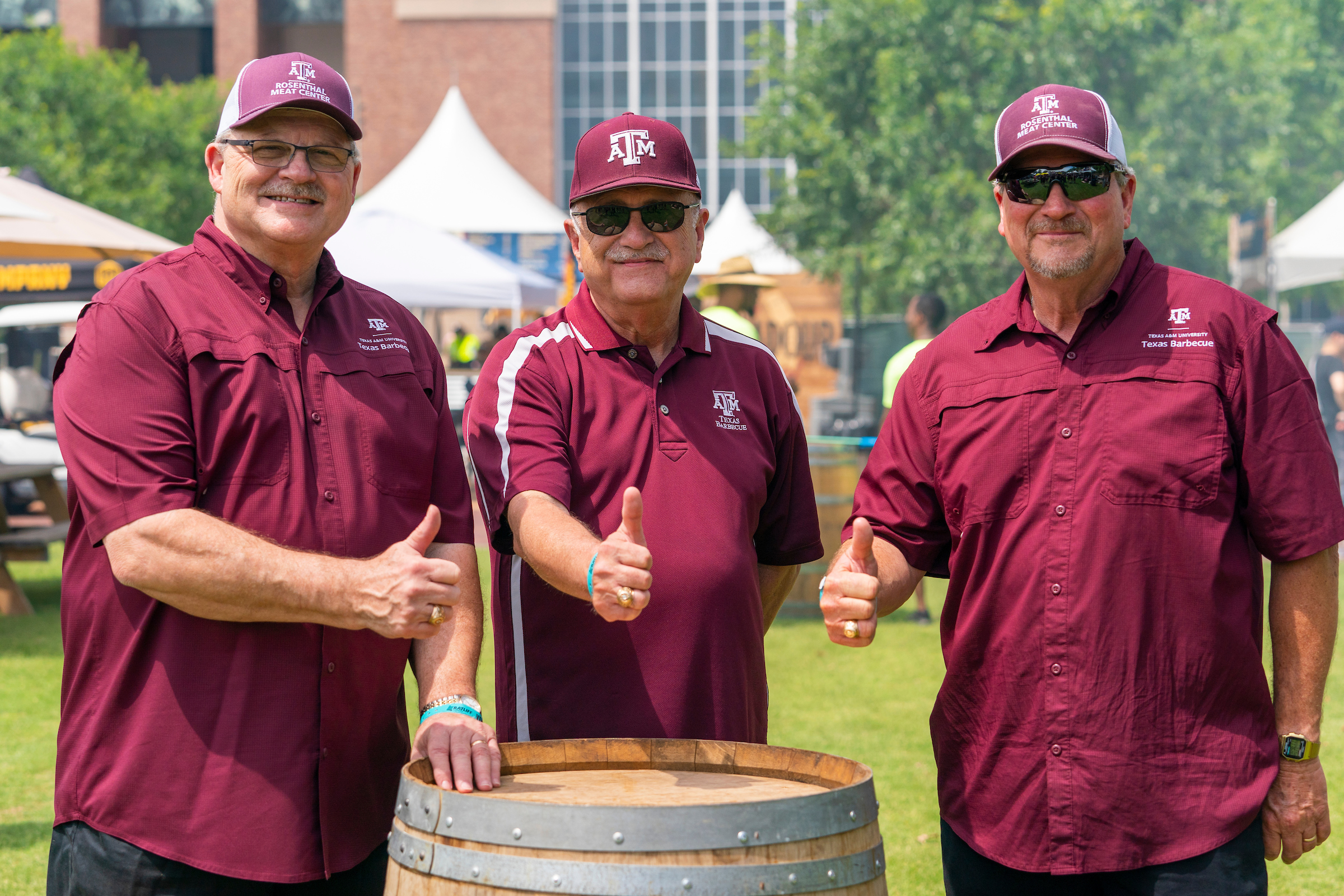Consumer demand and high prices prompt cattle producer optimism
Beef Cattle Short Course keynote speakers discuss advancements, issues, bright forecast
Optimism greeted beef cattle producers from around the country attending the Texas A&M Beef Cattle Short Course recently for two primary reasons — high cattle prices and continued consumer demand, despite the higher beef prices.
Unlike in previous decades, Americans today eat higher-grade beef and pay a premium for it. Beef cattle producers broke out their timelines at the Texas A&M Beef Cattle Short Course to see where their industry had been, where it is today and where it might be headed.
David Anderson, Ph.D., Texas A&M AgriLife Extension Service livestock market specialist and professor in the Texas A&M College of Agriculture and Life Sciences Department of Agricultural Economics, set the mood for the first day of the Short Course with his analysis of today’s market and a forecast.
“We have a lot of reasons for optimism in the cattle market going forward,” Anderson said.
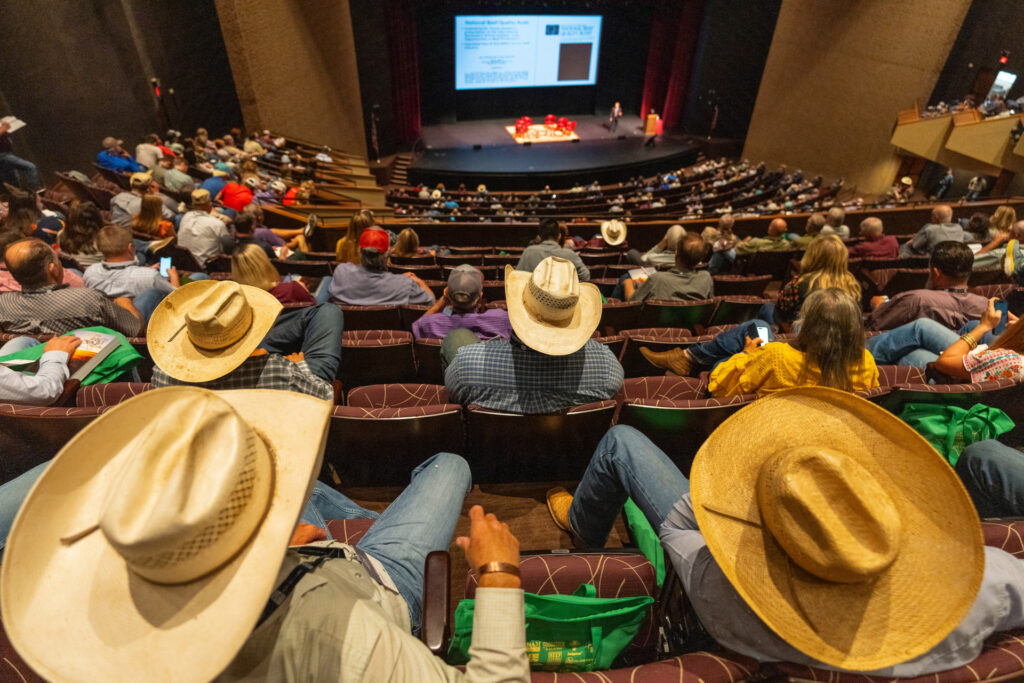
The current cattle market
Three market issues will determine where the beef industry moves in the longer term — demand, drought and speed of rebuilding, Anderson said.
“We have a product people want to buy,” he said.
The combination of high consumer demand with the current tight beef supplies added up to Anderson’s prediction that high beef prices will continue.
Moving forward, Anderson said drought and feed costs will determine the speed of rebuilding the herd, affecting how soon the prices come back down. Record corn production this year combined with fewer cattle on feed could affect feed costs. The question is: Are the current beef prices high enough to start herd rebuilding?
The answer to that question seems to be no. Right now, there is little evidence of the herd rebuilding, he said. Beef heifers held back as cow replacements are the lowest in 50 years, and that number is not expected to increase significantly in 2024.
Anderson said producers are not holding heifers back yet, but they are sending fewer cows to slaughter, indicating the selloff is slowing down, “but we have not turned the corner yet.”
He predicted the industry could expect beef production to decrease by 6% in 2024 and to see even less production in 2025, which means there will continue to be tighter and tighter production for a product consumers like.
“And we’re producing the highest USDA quality graded beef in history,” Anderson said. “We are supplying exactly what consumers want. This is really a positive picture for the overall market going forward.”

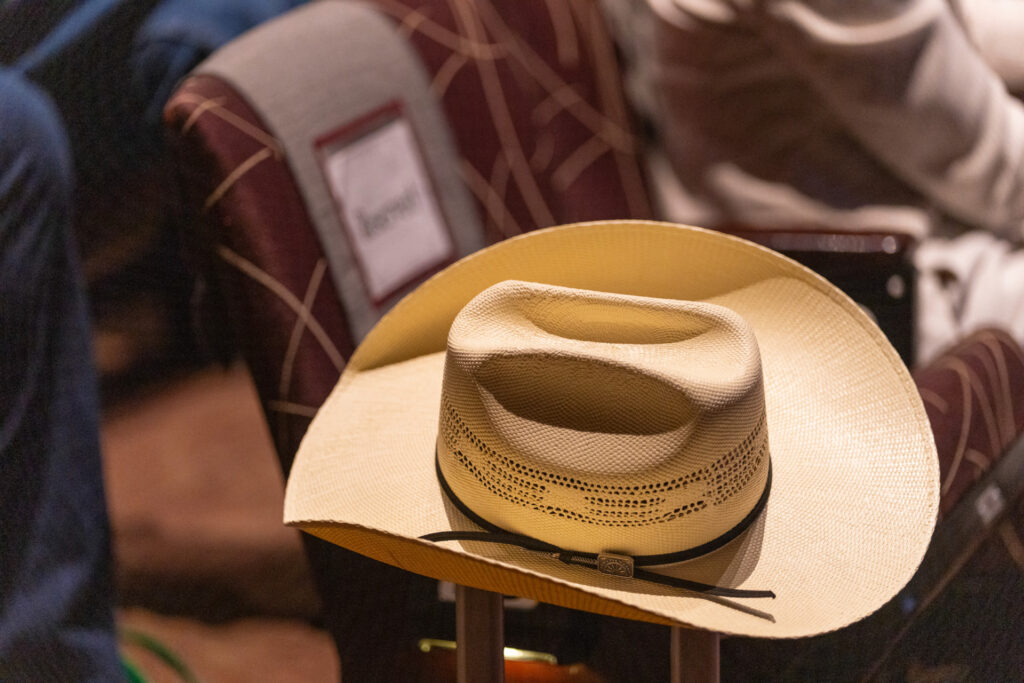
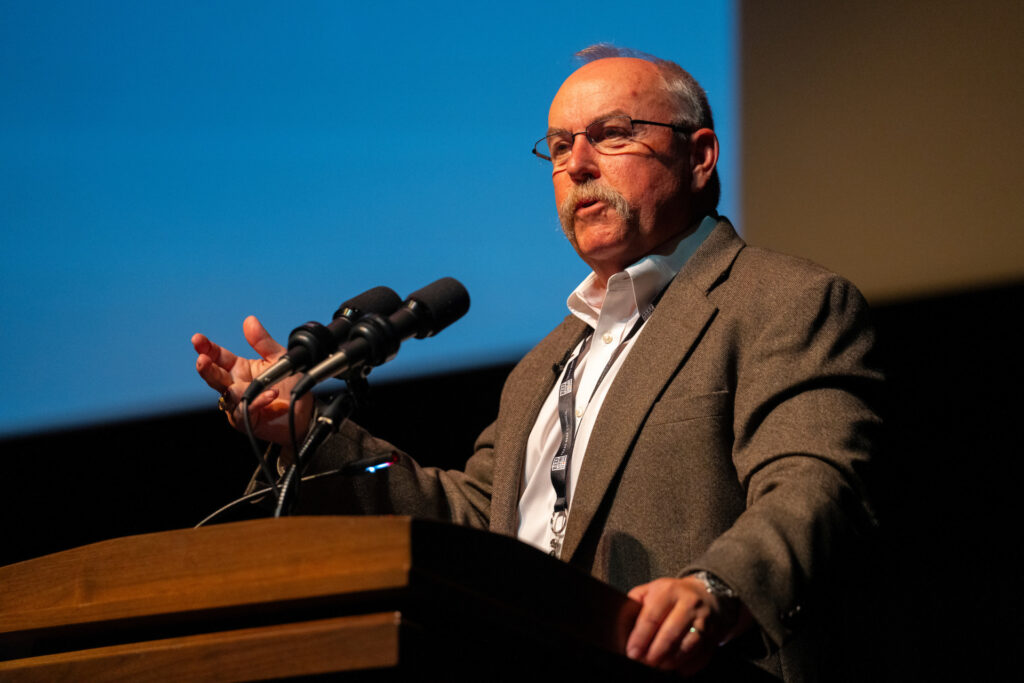
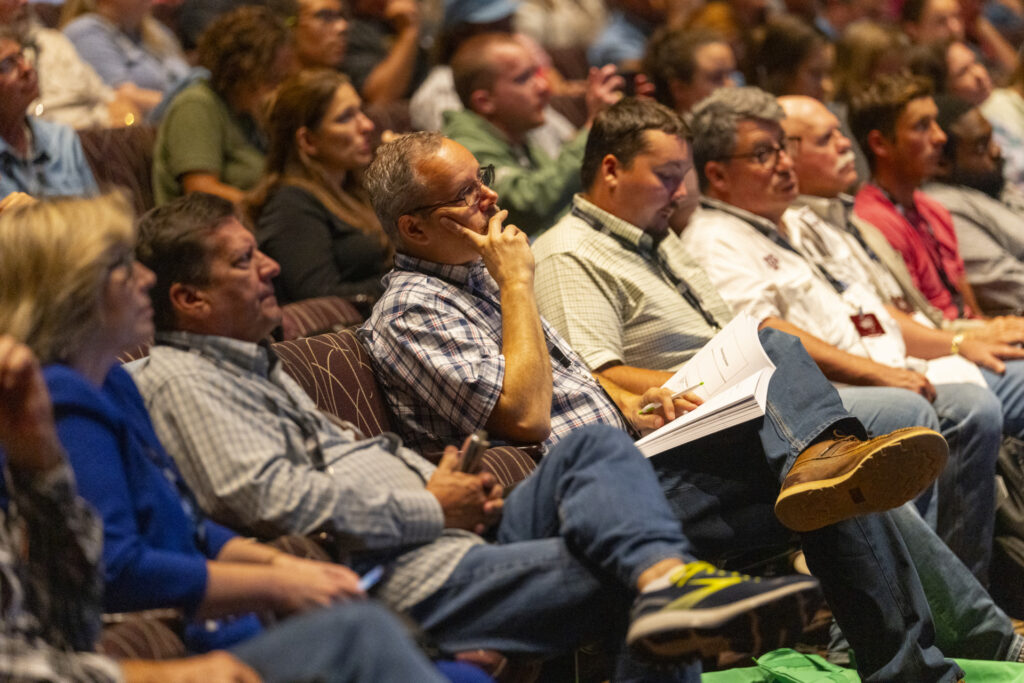
How the cattle market has changed to meet consumer demand
Jeffrey W. Savell, Ph.D., vice chancellor and dean for Agriculture and Life Sciences and a meat science professor in the Department of Animal Science for more than 40 years, offered insight into what has occurred over the last five decades that has led up to the current situation:
- 1970s: Trouble was brewing. The U.S. Senate published what became known as the McGovern Report on human nutrition and needs, which shifted the national dietary guidelines to focus on decreasing cholesterol and fat and obtaining adequate nutrients. Beef was not specifically named, but there was concern about fat in beef.
- 1980s: Searching for lean beef. With fat a concern, the beef industry decided to produce lean beef. There was a move toward what they thought the consumer wanted — beef without marbling. However, in the mid-1980s, the National Consumer Retail Beef Study suggested consumers wanted the “taste fat, not the waste fat.” Consumers said they wanted marbling, not the outside fat. The industry pivoted to closer-trimmed cuts of beef, increasing beef purchases. The consumer also wanted a change at the meat counter to find the lean beef more easily. In 1987, the USDA Good grade of beef became USDA Select, which is just below Choice. “Texas was the state that benefited the most from that change because we had the greatest percentage of beef that fit in that category,” Savell said.
- 1990s: Managing what you measure. An influential paper, “Lost Opportunities in Beef Production,” by the National Cattlemen’s Association economist Chuck Lambert, estimated the beef industry was losing $12 billion annually. As a follow up, a National Beef Quality Audit was conducted by Texas A&M, West Texas A&M University, Oklahoma State University and Colorado State University. “We sat down to see what it really was we were producing,” Savell said. Texas A&M created the Beef 706 program with the Texas Beef Council to help ranchers better understand their product and what happens after the calf leaves their ranch. The beef industry also conducted tenderness and beef customer preference surveys in major cities. This information helped guide beef product marketing.
- 2000s: Fighting a winnable battle. “Don’t get into a fight you can’t win,” Savell said. When it comes to leanness and price, overall, beef cannot beat poultry and pork, he said. But taste belongs to beef. “You beat them on taste. That is a fight you can win.” The industry also started using instruments to accurately measure marbling and get better data for appraising beef quality.
- 2010s: Making progress. When ranchers lost or decreased their herds in the drought of 2011, they rebuilt herds with better genetics. The losses “gave everyone a reset,” Savell said, still impacting the type of beef produced today. Then, Walmart announced its intent to sell higher-grade beef with an emphasis on quality. Other supermarkets across the nation followed suit. And then came the barbecue boom. Again, Texas A&M created programs that helped build the boom — Barbecue Summer Camp and Camp Brisket now have five-year waiting lists. Beef on dairy cattle also became a hot topic, as people continued searching for ways to make dairy cattle more valuable by increasing their muscling.
- 2020s: Current status. The latest quality audit, in 2022, showed increases in Choice and Prime beef on the market. The five key cuts that drive the value of beef are rib-eye, strip, top sirloin, tenderloin and brisket. The latest tenderness survey also showed the average shear force value has declined by 43%, indicating beef has gotten more tender due to better genetics and management. In other words, beef palatability is meeting the needs of the marketplace.
“It’s important to know where you are going and have a clear target,” Savell said in wrapping up. “It is not going to be without problems … there will be issues you will have to face. But if you are producing the kind of product the consumer wants, you are on the right path.”
The future of the beef cattle industry
Ron Gill, Ph.D., beef cattle specialist and associate department head for AgriLife Extension in the Department of Animal Science, led a panel discussion looking at the beef industry’s future. The panel included Donnell Brown, R.A. Brown Ranch, Throckmorton; Austin Brown III, Brown Ranches, Beeville; and Shalene McNeill, Ph.D., registered dietitian and executive director of nutrition science, health and wellness for the National Cattlemen’s Beef Association.
“Consumers absolutely love beef,” McNeill said. “But that does not mean you can say ‘I’m done doing all the hard work,’ because we still have challenges ahead to meet consumer expectations. There are promises we must deliver on to keep them demanding beef.”
Specifically, those promises involve advancing the taste, value, human nutrition, convenience and versatility, and, more recently, sustainability of beef to maintain consumer demand.
“It’s a great situation to be in because everyone’s meat IQ is up,” McNeill said. “During the pandemic, the consumer was cooking more. They tell us they are confident in cooking beef.”
Austin Brown said ranching is much more than just a way of life; it is a business. Today’s ranchers must be innovative and efficient; they must understand what the consumer is asking for and think outside the box to produce that higher-quality product.
While the consumer has moved from eating 3% to 10% Prime beef in the past 15 years, Donnell Brown said he predicts that number will rise to 30% by 2040. Looking forward to 40 years from now, he expects consumption to be at 75% Prime because it is a higher-quality product.
“It is easier to sell what the consumer wants to buy than what we want to raise,” he said.
However, he said, labor, marketing and taxes will continue to be issues; and water, land, weather and government will be increasingly larger issues with each decade. There will be “lifestyle” ranches owned by people driven by joy more than profitability, but the profit-dependent producer will be vertically coordinated and more profitable moving forward.
“You don’t have to change, but you will have to compete with those who do,” Donnell Brown said. “There will be a major generational shift in the cattle business in the next 10 years, and with that, the technological shift and innovation will blow our minds. I am excited about what is ahead.”

Dates for the 2024 Texas A&M Beef Cattle Short Course have been announced: Aug. 5-7.
Mark your calendars now.



